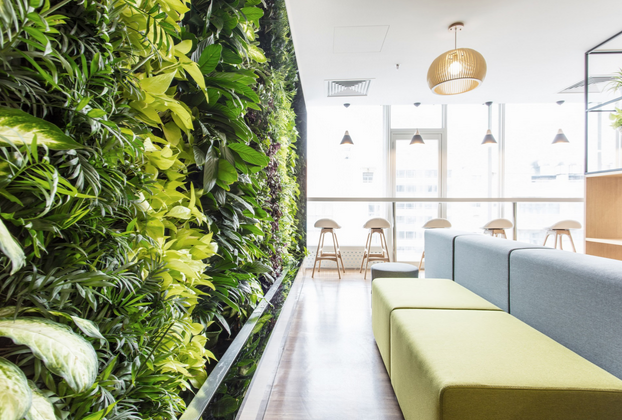Energy inefficient commercial property assets in
the UK have continually underperformed in terms of total returns and capital
growth, compared to energy efficient assets, since the launch of CBRE’s
Sustainability Index in 2023.
The real estate advisor’s newest Index reports
the performance gap is still evident despite narrowing slightly over the first
half of 2024.
Since publishing the first Index results last
November, all energy efficient commercial property assets have recorded total
returns of 11.2%, compared to 7.0% for the inefficient sample. However, in H1
2024 inefficient total returns were slightly stronger than for the efficient
sample at 2.3% and 1.7% respectively.
Over H1 2024 capital growth for all efficient
assets was -0.4% for efficient assets compared to -0.3% for inefficient assets.
Rental value growth was marginally higher for the efficient sample at 1.7%
compared to 1.5% for inefficient properties over this period.

Jennet
Siebrits, CBRE’s Head of UK Research, said: “Taking a view over
the history of the index, we see that inefficient assets have underperformed
efficient in terms of total returns and capital growth across all sectors. This
performance gap is still evident despite narrowing marginally over the first
half of 2024.
The slightly stronger performance of inefficient
stock in H1 2024 could reflect a perception that some inefficient assets are
good value for money after significant discounts throughout 2022 and 2023.
“Moreover, some investors are increasingly
adopting “brown to green” value-add strategies whereby less efficient assets
are acquired at a discount and retrofitted for improved efficiency, increasing
asset value. An interest in some less efficient assets may account for the
slight uptick in performance for inefficient samples.
“Despite these trends, we do not expect they
represent a fundamental change in the relationship between sustainability and
investment performance.”
Sam
Carson, Head of Sustainability for Valuation and Advisory Services at CBRE UK,
added: “The third iteration of the CBRE Sustainability Index
continues to be a valuable tool for describing the relationship that
sustainability features have with the commercial real estate market. Given the
low transaction volumes of the past year, it should not be surprising that the
results if the first half of 2024 have been less conclusive than in the past.
However, by maintaining updates to the index we can continue to reflect how ESG
risks are being priced by asset investors and occupiers.”
The wide performance gap between efficient and
inefficient assets in the office sector continued into 2024 and is now at its
widest in the history of the index for rental values.
In H1 2024, total returns for efficient offices
were -0.3% compared to 0.3% for the inefficient sample, narrowing the returns
performance gap marginally. Capital value growth was -2.3% for efficient
offices compared with -2.0% for inefficient assets. Rental value growth was
2.3% for efficient assets and 1.6% for inefficient.
Siebrits said: “The Offices results reflect a
deceleration in value declines compared to the previous year, suggesting price
discovery is starting to occur in both the efficient and inefficient groups.
Heavily discounted inefficient offices may be starting to attract value-add
investors aiming to carry out brown to green conversions.”
Over the history of the index efficient and
inefficient industrials have reported broadly similar performance, albeit with
efficient assets recording greater total returns and capital growth.
While there was still a performance gap in Q2
2024, it narrowed marginally over the first half of 2024. Total returns for the
inefficient sample were slightly higher at 3.2% compared to 2.2% for efficient
assets. Capital growth for the efficient sample was 0.3%, whereas values for
inefficient industrial assets rose 0.7%. Inefficient industrial assets
delivered stronger rental growth over the first half of the year at 2.2%
compared to 1.8% for efficient assets over the same period.
Siebrits added: “Faster rental growth for the
Industrial inefficient sample could be complicated by tenant preference for
older stock in better locations with potentially poorer EPC ratings.”
The Retail sector has historically displayed a
significant underperformance by inefficient assets, although this is related to
sample composition (1). This performance gap continued in 2024, but both
efficient and inefficient assets appear to be benefiting from improving
sentiment in the sector.
Both samples reported total returns of 3.8% in H1
2024. This is the first 6-month period in which total returns have risen for
both groups since Q2 2022. Efficient retail assets reported stronger capita
growth at 1.1%, compared to 0.7% for the inefficient sample. The efficient
sample recorded rental growth of 1.1% compared to 1.0% for inefficient.




















